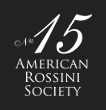Cellos in Rossini’s day, reflections by Hilary Metzger
Last summer, Hilary Metzger played continuo and led the cello section in Teatro Nuovo’s production of Tancredi, under the direction of Will Crutchfield (at the keyboard) and Jakob Lehman (as concertmaster). She’ll be back for this summer’s upcoming production of La gazza ladra, for which the orchestra will again be playing on period instruments and experimenting with historical performance practices and orchestral seating plans. Here, she reflects on the issues raised by such performances of Rossini’s operas in the light of the historical evidence.
“Touches of sweet harmony” : orchestral cello and bass playing in Rossini’s day.
Orchestral string playing in the early to mid-nineteenth century is a relatively neglected field of research, in part because of a perceived lack of good evidence. Instrumental methods are our most significant source of information, and thus must be read critically. Many cello methods were written by soloists, and the relevance of their fingerings and bowings in solo and chamber music parts is debatable for orchestral performance. Surviving orchestral parts were usually reused for so many years that the players’ penciled-in markings are hard to date. And until recently, much of the historical research on orchestral playing has focused on German, French or Viennese ensembles, not Italian ones.
But information is out there if you know where to find it, and how to evaluate it when you do! Most nineteenth-century Italian cello methods were written by the first cellists in opera orchestras. Even when these musicians merely translated existing works into Italian it is interesting to observe what they decided to leave out or change. They also wrote pieces for their instruments—often based on thematic material from the operas they played—in which they indicated fingerings and bowings and made other technical suggestions.
This article will examine the historical evidence for orchestral cellists and double bass playing during the Rossinian era. What type of instruments and bows did these players use? What instrumental techniques did they prefer? And what were the differences between and French ad Italian bass string instruments that Rossini knew? I will also consider the vital question of how cellists, double bassists, and keyboard players executed the continuo part in secco recitatives, which were notated with a figured baseline indicating the harmonies.
